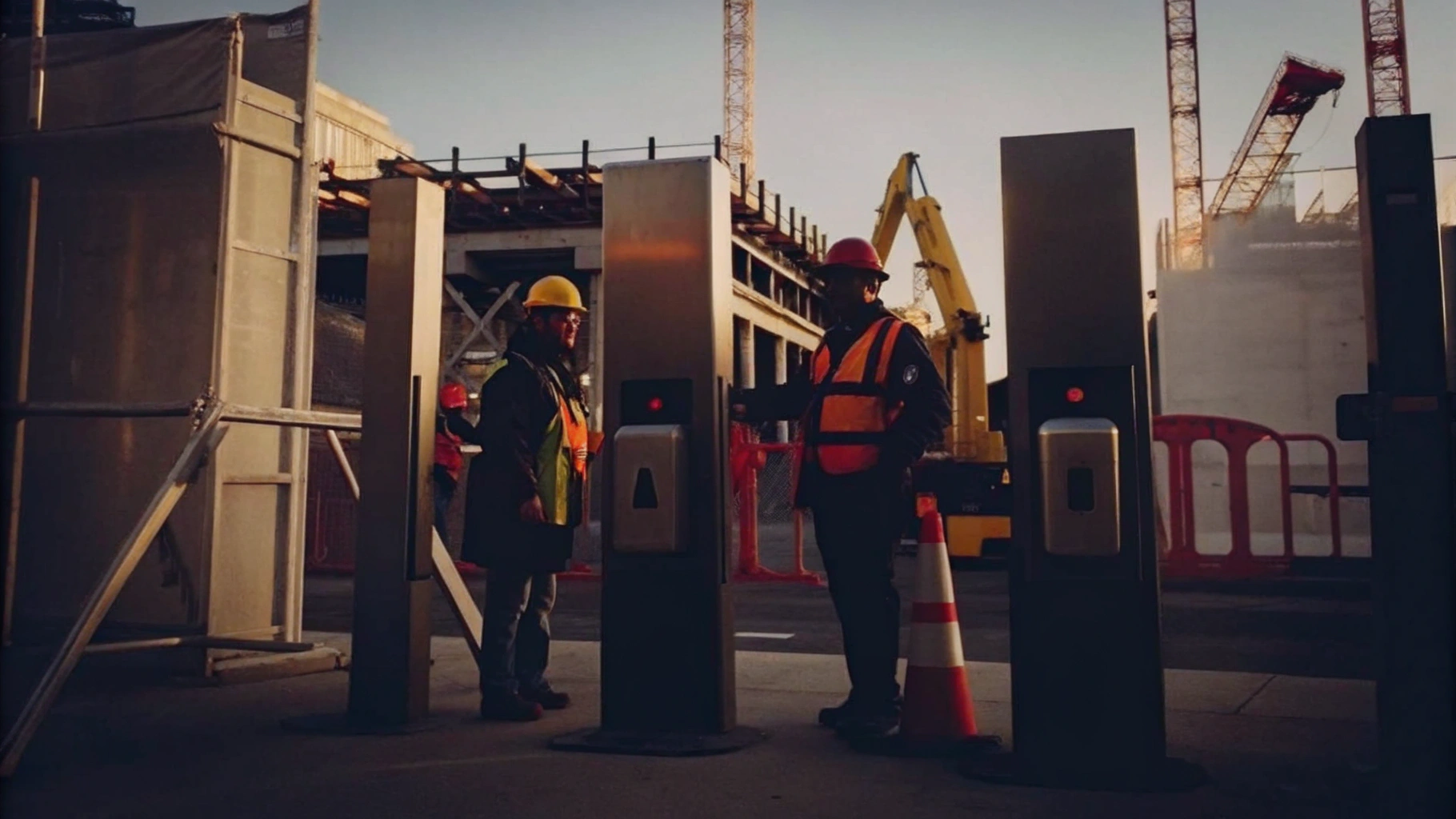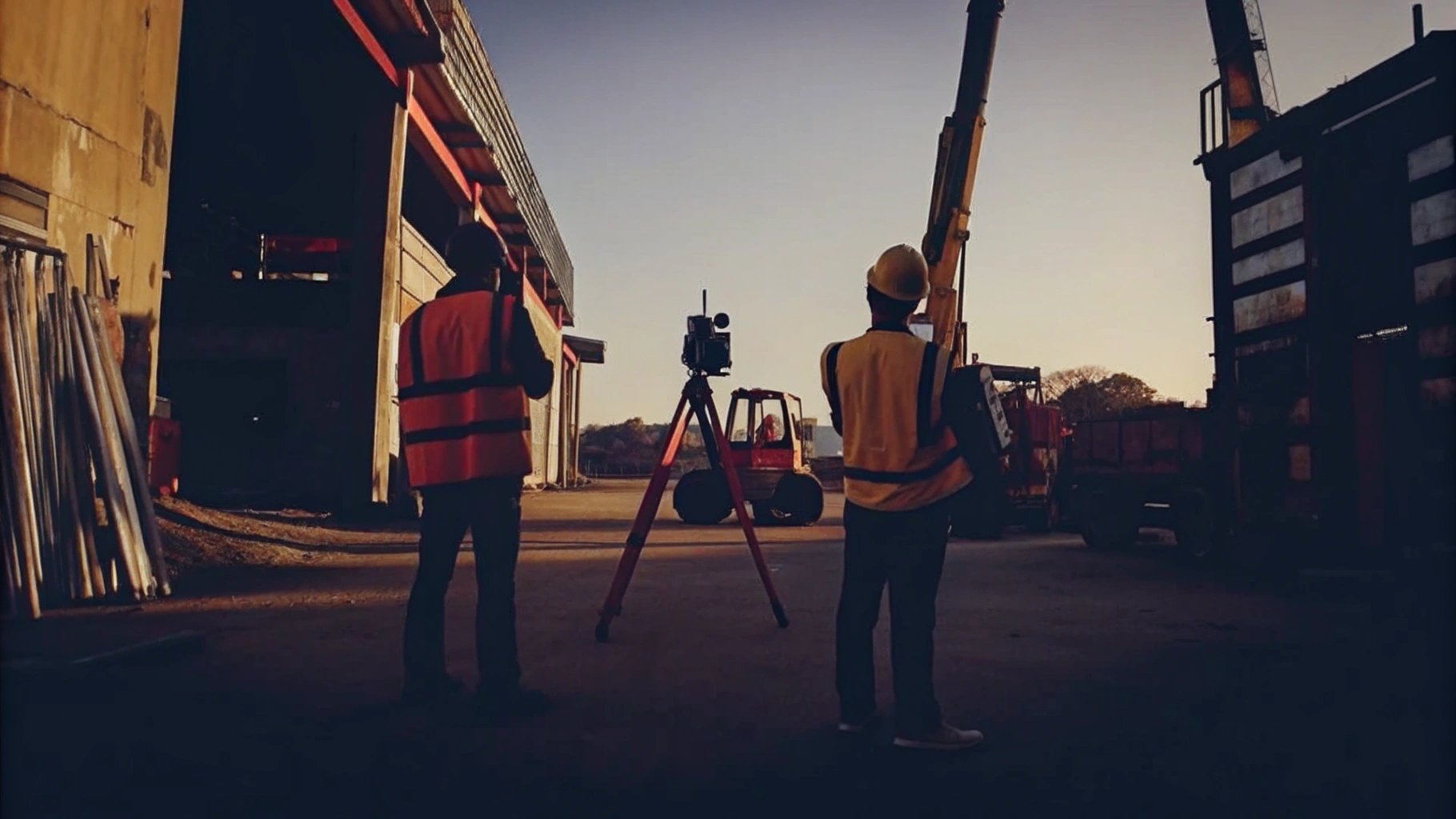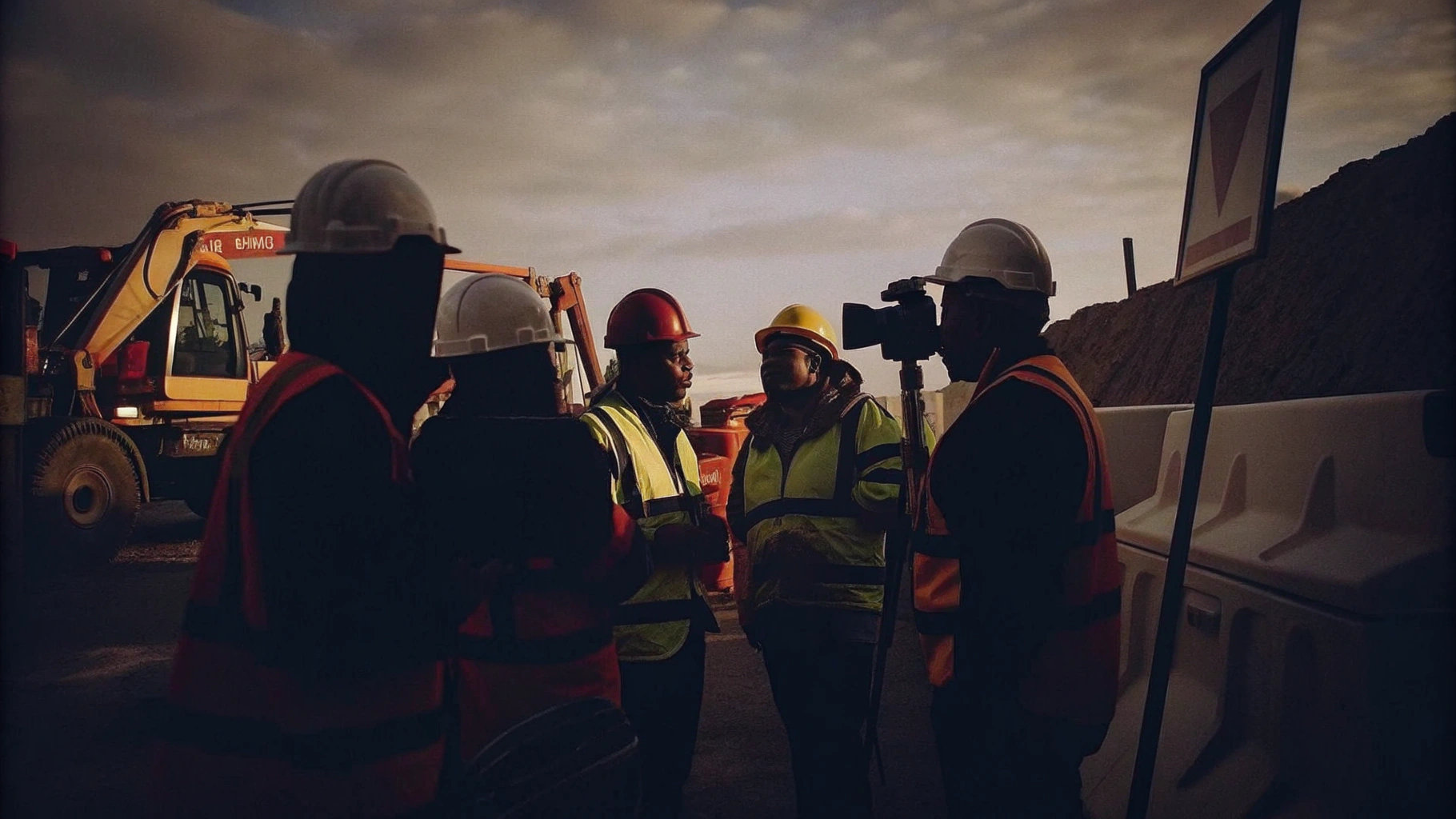
Master Corporate Risk: Best Practices for Construction Managers

Overview
The article emphasises the necessity for construction managers to master corporate risk management. Systematic approaches are crucial for identifying, evaluating, and mitigating various risks, including financial, operational, legal, and reputational threats. The reality is that neglecting these aspects can lead to significant consequences for projects and businesses alike.
Frameworks such as ISO 31000 are essential in guiding managers through the complexities of risk management. That said, ongoing training and the integration of advanced technologies are equally vital for enhancing safety and operational efficiency. In practise, fostering a culture of risk awareness and proactive management among teams is not just beneficial; it is imperative for long-term success.
The lesson is clear: without a robust risk management strategy, organisations expose themselves to potential financial setbacks and reputational damage. By prioritising these practises, construction managers can ensure that their teams are well-equipped to navigate uncertainties in the industry.
Ultimately, embracing these best practises allows for a more resilient approach to construction management, safeguarding assets and ensuring business continuity. Priority First stands ready to support organisations in implementing these strategies effectively, providing a measured solution to the challenges faced in today’s construction landscape.
Introduction
In the construction sector, projects often face a multitude of risks that can jeopardise their success. Effective corporate risk management is essential for navigating these challenges. This article explores best practises that enable construction managers to identify, evaluate, and mitigate potential threats, ensuring both project success and safety. The reality is that as the industry evolves, new challenges emerge.
How can managers foster a proactive risk-aware culture that not only addresses current vulnerabilities but also anticipates future uncertainties?
Ignoring these risks can lead to significant financial, operational, and reputational consequences. Construction theft alone costs UK businesses over £1m a week, underscoring the critical nature of security as a business function. In practise, the ability to foresee and manage risks can differentiate successful projects from those that falter.
Priority First plays a vital role in this landscape, offering practical solutions grounded in evidence and experience. With over £1.6bn in assets secured and rapid response times, our approach is built on measured reasoning rather than hype. Early investment in risk management not only protects assets but also ensures business continuity.
The lesson is clear: cultivating a risk-aware culture is not merely an operational necessity; it is an investment in long-term resilience. By prioritising security, construction managers can safeguard their projects against the uncertainties of tomorrow.
Understand Corporate Risk Management in Construction
Controlling corporate risk in construction necessitates a systematic approach for identifying, evaluating, and mitigating threats that could negatively impact project outcomes. Key threat categories include financial, operational, legal, and reputational risks, all of which are interrelated and contribute to corporate risk. Understanding frameworks such as ISO 31000 is crucial for navigating corporate risk, providing comprehensive guidelines for effective uncertainty management. In 2025, adoption rates of ISO 31000 within the construction sector are projected to increase significantly, reflecting a growing acknowledgment of its importance in bolstering project resilience.
Establishing a transparent policy for corporate risk oversight is vital for aligning all stakeholders on risk priorities and mitigation strategies. Regular training and updates on practices related to corporate risk management are essential for maintaining a proactive stance against potential threats. As Michael Bruch, Global Head of Risk Advisory Services, states, "In today's unstable and interconnected threat environment, businesses must embrace a comprehensive management approach to corporate risk and continuously strive to enhance their resilience."
Implementing robust access control systems from Priority First is a pivotal component of this holistic strategy. By regulating the movement of personnel and vehicles through secure entry points, managers can substantially reduce the risks of theft, unauthorized access, and operational disruptions. For instance, a construction site that integrated Priority First's access control solutions reported a 30% decrease in unauthorized entries, leading to improved site security and operational efficiency. Effective logistics coordination further enhances this by ensuring the orderly movement of materials and personnel, thereby minimizing delays and bottlenecks. This proactive approach not only strengthens site security but also facilitates smoother project execution.
The significance of ISO 31000 in establishing corporate risk oversight cannot be overstated; it offers a systematic framework for addressing uncertainties while fostering a culture of continuous improvement and accountability. By integrating these guidelines into their operations, project managers can markedly enhance their ability to navigate the complexities of corporate risk, ensuring safer and more successful project outcomes. Additionally, addressing data protection risk management and promoting equality and diversity are essential elements that strengthen management practices within the construction industry.

Identify and Assess Construction-Specific Risks
Construction projects face numerous challenges, including site safety hazards, equipment failures, supply chain disruptions, and regulatory compliance issues. To effectively identify and manage these risks, project managers must conduct thorough evaluations involving all stakeholders. Techniques such as brainstorming sessions, checklists, and impact matrices are essential for categorising threats by their likelihood and potential impact. Regular site evaluations and assessments are crucial for uncovering hidden dangers that may not be immediately apparent.
Statistics reveal that around 69,000 workers in the construction industry experienced work-related health issues between 2020/21 and 2022/23, highlighting the critical need for proactive hazard management. Additionally, equipment failures are a significant contributor to workplace accidents, with forklifts involved in a substantial percentage of incidents—one in six workplace deaths is linked to forklift operations. This reality underscores the necessity for comprehensive training and routine maintenance checks to mitigate equipment-related accidents.
Integrating technology into risk evaluations can significantly enhance their effectiveness. AI-powered tools for predictive risk modelling empower managers to identify vulnerabilities before they escalate, providing actionable insights that inform security protocols and operational strategies. Tailored security solutions, such as those offered by Priority First, further bolster site safety and operational efficiency. For instance, during the development of a luxury hotel in Chelsea, Priority First implemented security and logistics management, ensuring the site remained safe and organised. Their approach involved regular evaluations of potential issues, staff training, and the deployment of specialised security personnel, which collectively helped keep the project on track. By fostering an environment of security and continuous improvement, supported by strong leadership and specialised protective measures, project managers can better safeguard their workforce and ensure project success.

Implement Effective Risk Mitigation Strategies
Applying effective strategies for corporate risk reduction in building projects necessitates a comprehensive approach that prioritises protective measures, contingency planning, and the integration of advanced technology. The construction sector accounted for nearly half (47.4%) of all fatal falls, slips, and trips in 2022, underscoring the urgent need for stringent safety protocols. Furthermore, the estimated economic burden of workplace injuries and poor health in this industry reached £1.3 billion for 2021/22, highlighting the financial ramifications of inadequate safety measures.
Contingency planning is equally critical; having alternative suppliers or backup equipment available can sustain project timelines amidst potential disruptions. Ongoing communication with all project stakeholders ensures that everyone is informed about the corporate risk and the strategies in place to mitigate it. Additionally, the rise in mental health claims within the building sector indicates a disparity between perceived safety and actual worker engagement, reinforcing the need for a holistic approach to managing corporate risk.
The adoption of technology, such as AI-driven safety analytics and real-time monitoring systems, enhances safety by providing immediate alerts to emerging hazards, facilitating prompt responses. According to the Health and Safety Executive, there were 45 reported fatal injuries to workers in 2022/23, a rise compared to the average of 37 fatalities over the preceding five years. This proactive approach not only safeguards workers but also contributes to the overall success of building projects, emphasising the importance of fostering a safety-first culture within the industry.

Cultivate a Risk-Aware Culture Among Teams
Cultivating a safety-conscious culture within construction teams is essential for addressing security challenges effectively. Open communication channels empower team members to voice concerns about potential threats, fostering an environment where safety is prioritised. Leaders must actively engage in regular discussions and training focused on security and hazard awareness, demonstrating their commitment to managing uncertainties.
The establishment of a non-punitive reporting system plays a critical role in this context. It encourages employees to take responsibility for safety initiatives, ensuring that hazards are swiftly recognised and addressed. Acknowledging and rewarding proactive actions in hazard control reinforces the importance of a safety-first mentality, which is vital for maintaining operational integrity.
Moreover, conducting regular team meetings to review risks and mitigation strategies keeps risk management at the forefront of project operations. This practise ensures that all team members remain vigilant and informed, ultimately contributing to a more resilient construction environment. The lesson is clear: prioritising safety not only protects employees but also safeguards the overall success of construction projects.

Conclusion
Mastering corporate risk management in construction is essential for ensuring project success and safeguarding the well-being of all stakeholders. By adopting structured approaches to identify, assess, and mitigate risks, construction managers can navigate the complexities inherent in their projects. The integration of frameworks such as ISO 31000, along with the implementation of robust safety protocols and technology, plays a pivotal role in enhancing resilience against potential threats.
The reality is that proactive hazard management, effective communication, and the cultivation of a risk-aware culture among teams are crucial. Strategies such as contingency planning, regular training, and the use of advanced technology not only help in identifying risks but also foster an environment where safety is prioritised. The statistics and case studies presented underscore the pressing need for comprehensive risk management practises that address both physical and psychological safety concerns within the construction industry.
In practise, embracing a holistic approach to corporate risk management is vital for the construction sector to thrive. By prioritising safety, investing in training, and fostering open communication, construction managers can significantly reduce risks, enhance project outcomes, and contribute to a more resilient industry. The lesson is clear: all stakeholders must commit to these best practises, ensuring a safer and more efficient working environment for everyone involved.
Frequently Asked Questions
What is corporate risk management in construction?
Corporate risk management in construction involves a systematic approach to identifying, evaluating, and mitigating threats that could negatively impact project outcomes. It encompasses various threat categories, including financial, operational, legal, and reputational risks.
Why is understanding ISO 31000 important for construction risk management?
Understanding ISO 31000 is crucial as it provides comprehensive guidelines for effective uncertainty management, helping organisations navigate corporate risk. Its adoption in the construction sector is projected to increase significantly by 2025, highlighting its importance in enhancing project resilience.
How can a transparent policy for corporate risk oversight benefit stakeholders?
A transparent policy for corporate risk oversight aligns all stakeholders on risk priorities and mitigation strategies, ensuring everyone is informed and working towards common goals in managing risks.
What role does training play in corporate risk management?
Regular training and updates on corporate risk management practises are essential for maintaining a proactive stance against potential threats, equipping stakeholders with the knowledge to address risks effectively.
How do access control systems contribute to corporate risk management?
Implementing robust access control systems helps regulate the movement of personnel and vehicles, reducing risks of theft, unauthorised access, and operational disruptions. For example, a construction site using such systems reported a 30% decrease in unauthorised entries.
What is the impact of effective logistics coordination on project execution?
Effective logistics coordination ensures the orderly movement of materials and personnel, minimising delays and bottlenecks, which strengthens site security and facilitates smoother project execution.
What additional elements are important in strengthening management practises within the construction industry?
Addressing data protection risk management and promoting equality and diversity are essential elements that enhance management practises within the construction industry.
How does ISO 31000 foster a culture of continuous improvement?
ISO 31000 fosters a culture of continuous improvement and accountability by providing a systematic framework for addressing uncertainties, enabling organisations to enhance their risk management practises over time.




